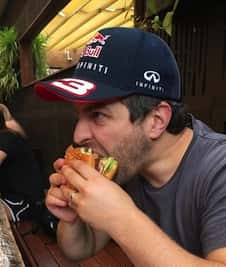“It’s terminal” – Nearly two years later, and those words still ring in my ears every day.
Just two minutes before I heard those words, my wife Rachael and I had nervously walked into a paediatrician’s office with what we thought was a healthy 10 week old baby. Now we’re being told the average lifespan for a child with Mackenzie’s ‘condition’ is only seven months.
Up until this point, the story of my wife and I was pretty standard. I met Rachael at work in 2013, had a whirlwind romance, travelled overseas, we married in February 2016, she fell pregnant, miscarried, fell pregnant again, and had Mackenzie on the 11th March 2017. Life was good – great actually.
Rachael was a mother the moment she found out she was pregnant, but me, I didn’t feel much like a father until Mackenzie arrived. Even when feeling the baby move in Rachael’s belly, I felt disconnected. Obviously, when you’re a father, the whole pregnancy thing isn’t really happening to you. For nine months, your wife has to change her diet, be careful with exercise, and her body is changing, but as much as you try to be there for her, guys can exercise, work, and eat sushi – disconnected.
But that could not have changed faster once Mackenzie arrived by Caesarean section. I vividly remember looking at Mackenzie on the table in the operating theatre and saying hello for the first time. Eyes filled with tears, looking at this screaming new arrival that looked dangerously like my father. I was absolutely in love, and my life had been changed forever.
Now don’t get me wrong, I understand that labour is tough. Having to be induced, 48 hours of labour, and pushing for three hours only to end up having a C-section is anything but an easy labour. Rachael is a superhero, I have no idea how she did it, and to be honest I’m never keen to find out. However, I believe I was lucky that Rachael had to have a C-section. It meant that for the first week or two, all the nappy changes, baths, and little tasks to do with Mackenzie had to be done by me. I believe it helped me bond with her in a way I otherwise may not have had a chance to do.
Werdnig-Hoffman disease the paediatrician called it, otherwise known as SMA Type 1. I asked what it meant. Will she need medication, physio, or could she simply grow out of it?
“It’s life ending – It’s terminal”
My wife and I are Police officers; which meant I promptly started trying to negotiate. I fired a barrage of questions at the doctor. Asking anything I could think of – there had to be a way out. I remember looking at Rachael, seeing her cuddling and talking to Mackenzie, a big innocent smile looking back up at her. Rachael just looked vacant almost without emotion; she was in shock and no longer functioning.
Each question I asked resulted in the worst case answer. There really was nothing we could do.
SMA is a rare neuromuscular disorder characterised by loss of motor neurons and progressive muscle wasting. In essence, we were told that Mackenzie would slowly lose her ability to move, to swallow and eventually to breath. We were told to expect that Mackenzie would likely pass away before her first birthday. The motor neurones in SMA are located in the spinal cord. Those neurons are unable to fire and tell the muscles what to do. The body then can't move leading to muscle wasting. In essence they become trapped in their body.
So that was that. What do you do as a parent who has just been told their 10 week old child has only has months to live? How do you leave a doctor’s office with your wife, drive home and prepare yourself for the onslaught of decisions and the new life direction that now faces you?
It’s a small mercy to me that very few people have to endure what we did over those months. Can you imagine having to sit down and write a Do-Not-Resuscitate plan for your 10 week old child, or having long conversations about the way you think it would be best for her to die, or waking up each morning and quickly checking if that was the day she left you? We did those things – and a lot more.
It’s worth mentioning at this point that at the time there was an experimental treatment option available. A new ‘wonder drug’ that was showing good results in some patients. This drug, shows results in around 60% of cases, requires an injection into the spinal cord every three months, costs $75,000US per injection, and at the time wasn’t on the PBS. Mackenzie’s SMA was also very advanced when she was diagnosed, so we knew that even in the best case scenario, we wouldn’t have her for very long, so we declined the treatment.
I remember the drive home from the paediatrician’s office, 1000 thoughts flying through my head unable to grab hold of a single one. The only thing that was said between Rachael and I on that drive home was a promise. We promised each other that no matter what happens, we will only let this bond our relationship instead of putting a wedge between us.
We quickly decided Mackenzie was going to live the best life she possibly could. She would travel, have both parents with her every day, and she would never see us cry.
I took a leave of absence from work, and we began our adventures with Mackenzie.

